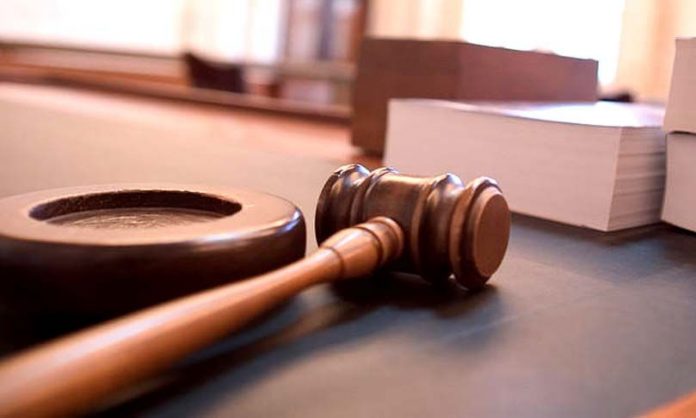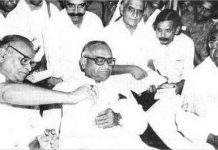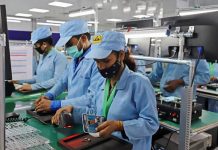This article is written by Anurag Singh from ILS Law College, Pune. This is a comprehensive article that critically analyses the insufficiency of the executive during the pandemic through the lenses of Indian courts.
Table of Contents
Introduction
We all can agree on the fact that the world has been brought to a standstill amid this pandemic. Everyone was forced to stay at home to curb the effects of COVID–19. There was some relief provided to the citizens in the form of vaccines, but then the second wave hit the country and things got ugly in a very short period. From a mere 15,000 cases a day, a spike of 4,00,000 cases a day was witnessed just within 15–20 days. Therefore, the judiciary had to step in, after witnessing so much suffering. Whether they were correct in doing so, let’s find out.
The role of the executive during the pandemic
“In its broadest sense, the executive department consists of all government officials except those acting in a legislative or judicial capacity. It includes all the agencies of government that are concerned with the execution of states will as expressed in terms of the law.”
–Gettell
This definition by Gettell makes it crystalline that the executive is of two types:
- Political executive (Ministers)
- Permanent or non-political executive (Civil Servants)
However, amid this pandemic, a different side of the government was exposed, which was a major part of the functioning of the political executive but was never highlighted enough, those are leadership and management.
Therefore, keeping in mind the pandemic, three key roles of the executive are:
- Effective decision making from the Centre
- Setting government priorities
- Policy coordination
-K Srinath Reddy (President, Public Health Foundation of India)
The decision-making authorities at the top were often criticized for not reacting to the pandemic sooner. However, India as a country had never seen such a health crisis, for a matter of fact, no country had seen such a healthcare crisis. But, the only positive that could be taken out from the pandemic situation in 2020, was that it laid down a roadmap for the second wave, the future healthcare crises, or any crisis in general that has an impact of this extent.
The loopholes and insufficiency
It will be safe to say that there was clear mismanagement on the part of the government while dealing with the pandemic situation in the country. Let’s examine those loopholes and insufficiency in detail:
Loopholes
“The central government, as well as most state governments, had low allocations for health in their budgets.”, K Srinath Reddy expressed his views on why there has been prolonged suffering across the country in the pandemic. Moreover, it will not be out of place to state here that for the longest time, the industry, agriculture, and service sector were considered the most economically productive. This can be accurately depicted by the data showing the percentages of GDP in health expenditure in 2018.
The United States had spent 16.84% of its GDP on health care, however, India had only spent 3.54%. It would be safe to say that the U.S was amongst the high spenders, and even it was not safe, rather, it was one of the most affected countries in this pandemic. Therefore, the government should not see the investment in health care with lenses of profits that they yield, the value that they bring for the citizens of the country should also be taken into account.
Insufficiencies
When India first saw the effects of COVID-19 in Italy and was planning to curb the effects in the country, India declared a strict lockdown with only four hours prior notice. The major insufficiency with this step was, most of the country’s population worked in the informal sector and their right to livelihood was instantly violated. Moreover, the policy formulated by the government was helping the elite and middle-class people and not the impoverished unorganized sector.
Furthermore, with prolonged lockdown, no money, and no livelihood, the unorganized sector wanted to go back to their hometown, even this was not possible because there was no transportation available. However, when it came to rescuing and evacuating people from outside India, flights were arranged for them. Therefore, it will be safe to say that the informal and unorganized sector was completely at the mercy of the government throughout the lockdown.
The intervention of the Judiciary in the working of the Executive
Separation of power has been the most essential pillar of democracy. For effective governance, it is observed that the legislature, the executive, and the judiciary should function independently. But, it is not out of place to state here that Covid-19 wasn’t an ordinary situation, therefore, to protect the human rights of the citizen and to help the Centre deal with the whole situation in a better manner, the judiciary had to step in.
The main objective behind the judiciary stepping in was, the ones leading us should not become ‘complacent’. Moreover, the Supreme Court of India has made it clear that it will not be a silent spectator to the suffering in the country. Following are the instances where the High Courts and Supreme Court expressed their dissent towards the executive:
Oxygen cylinder
During the first wave of the Covid–19, the Centre faced a set of problems that they had never faced before, therefore this resulted in the decision taken by the Centre being less effective and in the same cases detrimental to some sectors of society. However, when the second wave hit the country, they were expected to be well prepared at least this time around. But, the exact opposite happened, this time the things got even worse and got out of hand quickly.
The situation was so bad this time that hospitals had to pick and choose the patient that they will give oxygen to, the shortage of oxygen cylinders was so immense that the Supreme Court on 1st May 2021 had to order the Centre to deliver 700 metric tons of oxygen to Delhi. However, this instruction paved the way for the High Court of Tamil Nadu and Karnataka to pass similar orders, which was not a good look for the Indian judiciary. However, these were desperate times and as rightly put into words by Delhi High Court “We cannot let people die like this,”
Moreover, in the oxygen shortage situation, once again the Supreme court stepped in and prepared a task force of 12 members for the allocation and distribution of the oxygen. The object behind forming a task force was that no state is denied their quota, and no state is again in a ‘heart rending’ situation.
Elections
Until now you must have realized that the judicial system is not holding back from making any remarks and calling out the government whenever they are at fault. However, a statement by the Madras High Court did not sound like a criticism but sounded more like an allegation, they said that “Your institution is singularly responsible for the second wave of Covid-19,” and even went ahead with the statement and called the Election Commission of India (ECI) ‘murderer’.
Moreover, three PILs were filed against the breach of Covid protocol, and a bench comprising of Justice T B N Radhakrishnan stated that “Issuance of circulars and holding of meetings by themselves do not discharge the onerous responsibility of the ECI” they rightly said that the ECI is an implementing authority and just by issuing orders and leaving it the people will not suffice to their role they need to take some active actions to curb the same.
It will not be out of place to say that the spike in cases in West Bengal is a result of the election but it is unfair to blame the State and Centre solely for the second wave of COVID-19. For example, a major spike in cases within a short period was also seen in Maharashtra, Karnataka, and Delhi, however, none of these places had an election at the time.
Hospital beds and medicines
“Forget common man on the street, even if I were to ask for a bed, it would not be available right now,” talking about the acute shortage of beds in hospitals in Delhi, this was a remark made by Justice Vipin Sanghi. “People have been losing their lives waiting for a bed, even after losing lives the ordeal never ends” This is what Justice Shah had to say on a similar issue in Maharashtra. These remarks were enough to accurately explain what has been the impact of the second wave in the country.
These are a few other High Courts that addressed similar issues in Gujarat, Jharkhand, Karnataka, Sikkim, Madhya Pradesh, and Allahabad.
Various PILs were filed during the second wave complaining about the shortage of beds in hospitals and medicines like remedesivir as well as oxygen which are the necessities when admitted in the hospital. Our healthcare system was exposed like no one would have imagined in their wildest of dreams. The courts in the present matter expected transparency in the availability of data so that resources can be made available to people that are in dire need.
Vaccination
The Supreme Court bench comprising Justices D.Y. Chandrachud, L.N. Rao, and S.R. Bhat stated that “there are several aspects of the vaccine pricing policy adopted by the Central government which require that policy be revisited”.
Adding to the aforementioned point, the Supreme Court said that providing free vaccination to people above 45 and not doing the same for the age group of 18-44 will be unfair and discriminatory. Moreover, the Supreme Court went on to say that this differential treatment is prima facie violative to the right to health under Article 21 of the Constitution and the Centre should make the necessary changes to the same.
The Centre responded to the Supreme Court by saying “In the context of a global pandemic, where the response and strategy of the nation are completely driven by expert medical and scientific opinion, there is even little room for judicial interference.” The Centre here was trying to convey a point that the situation that the country is dealing with is a healthcare crisis. Therefore, the medical professionals and the executive should be trusted a little more with their plan of action.
K.S. Radhakrishnan, a former Supreme Court judge, also expressed his views on the current situation by saying “Administration is the job of the elected government. The Supreme Court cannot deal with highly sensitive and technical issues as it does not have the machinery for it.”
Kumbh mela and char dham
In April 2021, Haridwar reported 2167 cases just in five days of the Kumbh Mela, even though there was a clear spike in cases, the Kumbh Mela still wasn’t cut short. This isn’t the sole reason for the second wave in the state, but the state could have been cautious while conducting an event where footfall was over 1 lakh pilgrims a day. Therefore, when it came to organizing the Char Dham in Uttarakhand between 14 to 18 May, the Uttarakhand High Court said “cannot be allowed to turn into another Kumbh Mela” and cancelled the Char Dham due to the lack of preparation by the state government.
Ex gratia for COVID-19 victims
A PIL was filed in the Supreme court demanding an ex gratia payment for the people deceased by COVID–19 in lieu of a 2015 notification which says that all the victim’s families under Section 12 will be paid a sum of 4,00,000 ex gratia by the government. In the instant case, the Supreme Court awarded the victim’s families 4,00,000 ex gratia. However, the government responded to this judgment by saying “Funds are available but are being used for Covid management, to upgrade the healthcare system. Compensation payout is not a priority”. Therefore it will be safe to say that the government will not be obliged with the Supreme Court verdict right away.
An insight into the current scenario
With cases continuously dropping, India’s future looks bright and full of opportunities for the country. However, with only 3.5% of the total population being fully vaccinated the situation is far from normal, for the situation to come to normal complete dosage of vaccination is essential. It is claimed by the Central government that the entire Indian population will be vaccinated by the end of this year. However, a major challenge before the government is that the vaccines for the age below 18 are still under trial.
Moreover, urban and rural areas both have their own set of problems. In rural areas, vaccines are available but the people are not willing to take them, as there is misinformation amongst them that it has huge side effects. However, in urban areas, citizens are more informed but the availability is an issue
There were challenges faced by the government regarding the pricing and availability of the vaccines, but the government has worked its way up and not only increased the production of vaccines that are made in India, namely Covishield and Covaxin but also is importing vaccines from the countries where the vaccines have proved effective. Moreover, the government has started an initiative to give free vaccines to all its citizens from 21 June 2021.
Due to this healthcare crisis in the country, all the states and central governments have invested a lot of money in building better healthcare infrastructure. Under normal circumstances, it would have taken a lot of years to develop.
However, the situation for the unorganized sector still looks very uncertain because the state governments have eased some restrictions on the lockdown. The experts say that if the people behave carelessly as they did the first time there is a possibility of the third wave hitting India.
Conclusion
When you are running a race you certainly can’t win without an arm supported by your side. Therefore, blaming the executive for the current crisis is not right because the pandemic has just exposed an open gaping wound in the Indian system which is its crippled health care system, and this is certainly not the result of any one government. Furthermore, the judiciary’s intervention was only an attempt to help the government. It will be safe to say if both the machinery work together effectively, then India will be in a much better situation in the future.
References
- https://www.youtube.com/watch?v=-ChAv4EcZf0&t=11s
- https://timesofindia.indiatimes.com/india/centre-pushes-back-at-sc-warns-of-overzealous-judicial-intervention/articleshow/82537296.cms
https://t.me/joinchat/J_0YrBa4IBSHdpuTfQO_sA
Follow us on Instagram and subscribe to our YouTube channel for more amazing legal content.
 Serato DJ Crack 2025Serato DJ PRO Crack
Serato DJ Crack 2025Serato DJ PRO Crack











 Allow notifications
Allow notifications



